How to Solve a Mixed Up Rubik's Cube Easy
To 99% of the planet, solving a Rubik's cube can seem like an impossible task to complete. Similar to a Chinese finger trap, the harder you try to solve it the more difficult it gets. It even took the inventor of the cube Erno Rubik an entire month to solve his own creation. The secret to solving the cube is understanding some basic algorithms. The following tutorial will teach you everything you need to know in order to solve your first 3×3 cube from start to finish.
In order to understand and perform the algorithms, let's name the different parts of the cube.
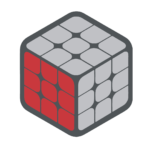
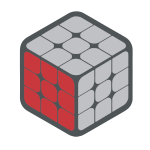 Face: There are 6 faces on a cube. The face is determined by the color of the centerpiece, which never moves.
Face: There are 6 faces on a cube. The face is determined by the color of the centerpiece, which never moves.
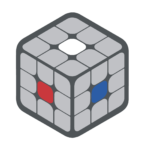
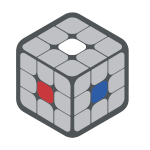
Centerpiece: These are the center tiles, and are fixed in their positions. There are 6 centerpieces.
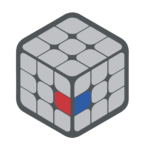
Edge piece: These always lie between the centerpieces, and are 2 colors. There are 12 edge pieces.
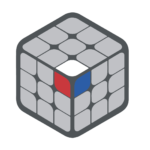 Corner piece: The corner piece is composed of 3 colors. In a solved cube the corner of a face will always match the centerpiece on that face. There are 8 corner pieces.
Corner piece: The corner piece is composed of 3 colors. In a solved cube the corner of a face will always match the centerpiece on that face. There are 8 corner pieces.
[Ad_blocks_shortcode ad_id='134776′]
A rubiks cube is solved using a series of movements that form algorithms. These movements are represented by 6 letters, known as notations. The default position of the cube should remain fixed, with the white face always facing up.

R – rotate the right face of your cube clockwise
L- rotate the left face of your cube clockwise
U – rotate the up face of your cube clockwise
D – rotate the down face of your cube clockwise
F – rotate the front face of your cube clockwise
B – rotate the back face of your cube clockwise
Notations followed by an apostrophe ( for example: U') indicate a counterclockwise rotation of that face.The suffix "2" (e.g. R2, U2…) means a double rotation of that face, or turning 180 degrees.
The following are two examples of algorithms that will be used to solve the cube: the "right hand algorithm" and the "left hand algorithm".


Some algorithms may include the notation "spin the cube", the rotation direction will be specified in the step.

1- The first step to solving the cube is creating a white cross
This step includes 2 mini-steps: the daisy and the cross. Start with daisy, or four white edge pieces around the yellow center piece. This mini step is based on trial and error, but for extra help view this video.

2- Turn the daisy into a white cross.
Position the cube with the daisy facing up and the green-white edge facing you. Holding the top layer in place, rotate the bottom 2 layers so the green edge is lined up with its center. Now rotate the front face twice to bring that piece to its correct position in the bottom layer, or F2.
Next, perform the same steps for the other white edges one at a time. Spin the cube so the next edge is facing you and repeat this step three times until a white cross is formed.
3- Complete the white face, solving the corners one at a time.
Locate a corner piece and where it would be in the solved state by identifying the 2 faces it should sit between (a face is identified by the centerpiece).

Flip the cube so yellow is on top. Choose a corner piece in the top layer. Position the cube so the corner piece faces you on the right side. Holding the top layer in place, rotate the bottom 2 layers until the corner is above its placement in a solved state. Use the "right-hand algorithm" or RUR'U'. Repeat this move until the corner piece is properly in place. When it is in place, locate the next white corner and repeat the same process for the next 3 corners. In the case where a corner is placed correctly in the bottom layer but not oriented correctly, repeat the right-hand algorithm until the corner is in place.
4- Solve the middle layer.
This step will use both the "Left hand" and the "Right hand" algorithm. The idea here is to locate the 4 edge pieces that belong in the middle layer and correctly place them. Yellow faces up for this step. Find an edge at the top layer that doesn't contain yellow. Position the cube so this edge is facing you. First, rotate the bottom 2 layers so the edge piece is on the correct face.
There are 2 cases: this piece needs to move right or left.
In order to move this edge piece right, complete the following steps. First rotate the top layer to the opposite direction that the edge piece should go. Since you want the edge piece to go to the right, start with the right-hand algorithm. Spin the cube clockwise. There should be a white corner on your left side. Perform the left-hand algorithm using your left hand. The edge is now in place.
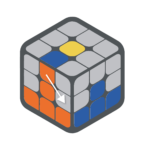

In the case where the edge piece needs to move to the left complete the same algorithm mirrored. First rotate the top layer to the opposite direction that the edge piece should go. Since you want the edge piece to go to the left, you're going to start with the left hand algorithm. Spin the whole cube 90 degrees counterclockwise. There should be a white corner on your right. Perform the right hand algorithm. The edge is now in place.
![]()

[Ad_blocks_shortcode ad_id='134798′]
5- Create a yellow cross or 4 yellow edges around the centerpiece.
Currently, there are 3 optional positions for the yellow face: a dot with no edges in place, a half cross, or a line. If the yellow face contains a half cross spin the cube so the cross is pointing right and facing you. If the yellow face contains a line, spin the cube so that it is horizontal. For each case use the following algorithm, F, right-hand algorithm, F'. This algorithm may be needed a few times in order to place the corner correctly.

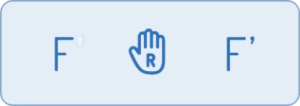
6- Position the yellow corners in place.
First, locate where each yellow corner should be placed on the solved cube. Keeping in mind orientation of the corner doesn't yet matter, you may need to swap 2 adjacent corners. Use the following algorithm. Keeping the yellow face on top, spin the entire cube so both corners that need to be swapped are to your right. Next perform three right hand algorithms, spin the cube clockwise, then three left-hand algorithms. Lastly, rotate the top layer until all of the corners are in the right place. To swap 2 diagonal corners perform the same series twice until it is placed correctly.
![]()

7- Complete the yellow face.
There might be corners that are in the correct place but not oriented in the right direction. Hold the cube so white faces up and the corner that needs reorientation is on your bottom right. Repeat the right-hand algorithm until the corner is in place. Then hold the top 2 layers while rotating the bottom layer clockwise. If this corner is not correctly oriented repeat the right-hand algorithm until it is in place. Do this for all four corners.
8- Position the yellow edges in place, or swap the location of the last 4 yellow edges.
If there is no solved side (orange, blue, red and green) in order to solve one side first perform this algorithm holding the yellow side up F2 U L R'F2 L'R U F2. When one side is solved, hold your cube so the yellow face is up and the solved side is facing backward. There are 2 cases: the edges need to move clockwise or counterclockwise. To move the edges clockwise perform this algorithm: F2 U L R'F2 L'R U F2. To move the edges counterclockwise perform this algorithm: F2 U' L R' F2 L' R U' F2


Congratulations on solving the "impossible" Rubik's cube!
[Ad_blocks_shortcode ad_id='134790′]
Source: https://getgocube.com/learn/how-to-solve-a-3x3-rubiks-cube/
0 Response to "How to Solve a Mixed Up Rubik's Cube Easy"
Post a Comment